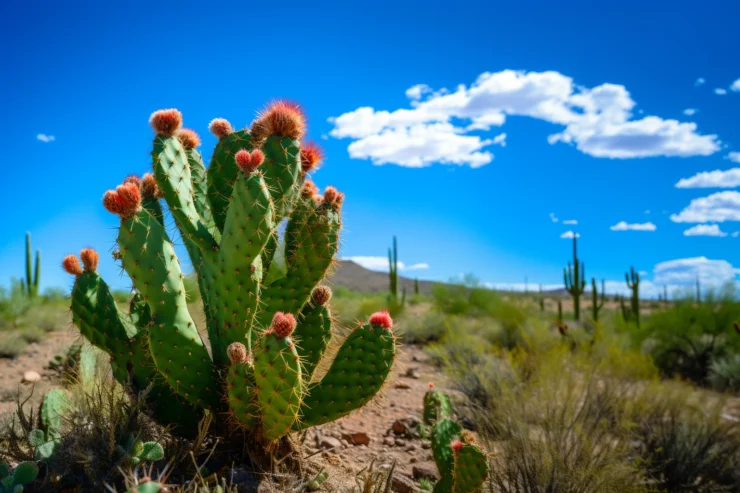The world of succulents unveils an intriguing mystery in the form of cacti and their formidable thorns. These spiky, resilient plants have adapted to thrive in some of the most arid and challenging environments on Earth. In this essay, we embark on a journey to uncover the reasons behind why cactuses have thorns, exploring the unique mechanisms and evolutionary advantages that make these prickly defenses an essential aspect of their survival.
Water Conservation
Cacti are renowned for their ability to endure long periods of drought. The thorns on their surfaces serve as a protective layer, reducing water loss through transpiration. The modified leaves of cacti, often reduced to spines, minimize the surface area exposed to the sun, helping the plant conserve precious water in harsh desert climates.
Defense Against Herbivores
The thorns of cacti act as a formidable defense mechanism against herbivores seeking a meal. The sharp spines deter animals from grazing on the plant, providing a first line of defense against potential threats. Some cacti also contain toxins, making the combination of spines and chemical defenses a potent deterrent.
Regulating Temperature
Cacti’s thorns play a role in regulating the plant’s temperature in extreme climates. By casting shadows on the surface of the plant, the spines help reduce the impact of direct sunlight, preventing overheating. This adaptation allows cacti to maintain an optimal temperature for photosynthesis without succumbing to the scorching heat of their environments.
Preventing Water Theft
In arid regions, where water is a precious resource, cacti face the threat of water theft from other plants. The thorns serve as a deterrent, preventing animals and competing vegetation from accessing the water stored within the cactus. This protective measure ensures that the cactus retains the essential moisture it needs for survival.
Facilitating Seed Dispersal
Interestingly, some cacti have evolved a symbiotic relationship with animals that aid in seed dispersal. The thorns of certain cacti may be modified to provide a suitable perch for birds or other animals, encouraging them to carry the cactus seeds to new locations. This relationship enhances the cactus’s chances of survival and colonization.
Adaptation to Harsh Environments
Cacti have evolved over millions of years to adapt to their specific environments. The development of thorns represents an evolutionary strategy that ensures their survival in regions where water is scarce, temperatures are extreme, and herbivores are prevalent. The thorns are a testament to the plant’s ability to thrive in challenging conditions.
In conclusion, the thorns of cacti are not just nature’s spiky adornments; they are a sophisticated adaptation that plays a pivotal role in the survival and success of these remarkable plants. From water conservation and defense against herbivores to temperature regulation and seed dispersal, the thorns of cacti showcase the ingenuity of nature in equipping plants with the tools they need to thrive in some of the harshest environments on our planet. As we unravel the mysteries behind cacti’s protective armor, we gain a deeper appreciation for the resilience and resourcefulness embedded in the intricate tapestry of the natural world.































